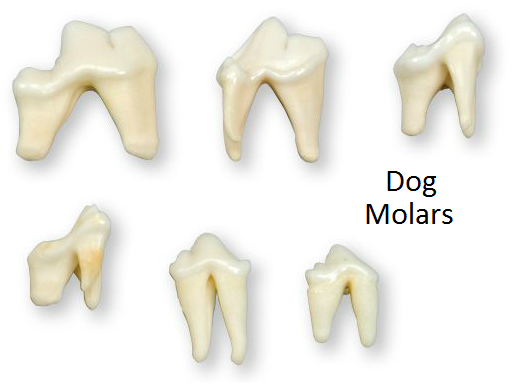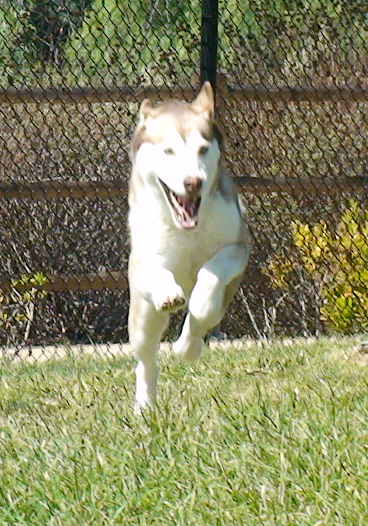We adopted the cats in August of 2008, and in January 2009 I started learning about pet food. For that story see the Cats Get Better Food post.
That started me on the path of ending up where I am now with feeding a raw diet to my dogs, as well as the cats recently.
I learned many shocking and disgusting things about commercial pet foods along the way and I kept seeing that a raw diet was ideal for your pet's health. I researched for months and months and months before deciding that raw really was the way to go. When we adopted Denali in mid-April of 2010 we fed her a good quality kibble, Taste of The Wild. By this time I had done a little research on raw but did not feel comfortable or ready to switch. Why? I'd heard stories of dogs being "raw fed" the wrong way and having serious health consequences. That wasn't what I wanted for my dog. Raw is very simple, but at the same time you must know what you are doing. I was content to feed kibble while I did my own research and reading. I wasn't about to believe that raw was best until I had seen enough proof.
I found story after story of old dogs acting young again, chronically sick dogs making impressive improvements, less frequent or no seizures in dogs who had been seizing their entire lives, better teeth, better breath, more balanced energy instead of spikes and crashes, allergies disappeared, skin was no longer dry and flaky, fur was soft and silky, no discharge from eyes or nose, anal glands no longer get impacted, no more ear infections, on and on it goes. The stories were there, more than I could count. I like to see scientific proof to back things up but unfortunately there are no studies (that I'm aware of) that have done comparisons or any type of research about the effects of raw feeding. Based on the stories and what little science I could find, I was pretty convinced and started looking into how to feed a balanced and healthy raw diet.
One of the first confusing things I discovered is that there are different types of raw feeding.
One of the most well-known seems to be the B.A.R.F. model. They sell products in the form of patties, nuggets, and even have treats. They use supplements like "B.A.R.F. Plus" which is a powder consisting of kelp, alfalfa, grasses, veggies, etc. Also, B.A.R.F. assumes dogs are omnivores so their products contain produce. Their products contain about 50% bone. My first thought was that it doesn't leave much room for the meat.
 |
| http://www.barfworld.com/cgi-bin/product.cgi?af=1212&category=29#cat_43 |
There are other commercial products like "Fresh Pet" (I'm choosing this one because I've been seeing it advertised on TV) which includes rice and also assumes dogs are omnivores and need produce. There are many other "raw" foods you can get at pet supply stores, grocery stores, and online. They are painfully overpriced, contain fruits and vegetables, and some contain grains and/or starches. Usually the meat content is not over 50-60% because it is full of veggies, fruits, and/or grains.
B.A.R.F. and other commercial foods didn't seem right to me. If I'm going to feed raw, then why would I be paying so much money for things wild canids don't eat like produce and grains*? Why would I need to add supplements, shouldn't the food itself provide everything my dog needs? Ok, so why am I looking at pre-made raw instead of doing it myself? That's where we get to the next way of feeding raw..
Prey model raw (PMR). In this form of raw feeding the aim is to give 80% meat, 10% edible bone, 5% liver, and 5% other organ. This is based on the body composition of a wild canid's natural prey such as a deer. By offering variety and different parts of different animals (affectionately called "Frankenprey"), the dog will get the nutrition it needs. PMR does not promote the feeding of fruits, vegetables, rice, grain, potato, nothing except meat, edible bones, and organs. Every necessary nutrient is present in a raw diet. I use that sheet in conjunction with the USDA Food Composition Database. By doing this I can compare different protein sources and organs to see which ones have the most of a certain nutrient. For example, Vitamin C is present in liver. Beef liver contains 1.3g per 100g. Chicken liver contains 17.9g per 100g. Chicken liver would be a much better source than beef liver.
So what do I feed? Mostly it's whatever I can get for cheap! I try to stay under $1/lb but will go up to $1.50/lb or a little more for meaty meat. I buy chicken quarters, whole chickens including sometimes whole birds including feet and heads if I can get them, turkey necks, pork roasts, ribs, beef heart, beef tongue, cornish game hens, oily fish like sardines and mackerel, and once I even bought 1/2 of a llama. For organs I mainly feed chicken liver, beef liver, and beef kidney. When I got the llama I also got 1/2 of every organ including lung, spleen, pancreas, etc. Feed whatever you have access to. Hunters may give you "leftovers" from their kills. You may be able to get kangaroo, bison, ostrich, sheep, goat, all kinds of things. It's all good!
So what do I feed? Mostly it's whatever I can get for cheap! I try to stay under $1/lb but will go up to $1.50/lb or a little more for meaty meat. I buy chicken quarters, whole chickens including sometimes whole birds including feet and heads if I can get them, turkey necks, pork roasts, ribs, beef heart, beef tongue, cornish game hens, oily fish like sardines and mackerel, and once I even bought 1/2 of a llama. For organs I mainly feed chicken liver, beef liver, and beef kidney. When I got the llama I also got 1/2 of every organ including lung, spleen, pancreas, etc. Feed whatever you have access to. Hunters may give you "leftovers" from their kills. You may be able to get kangaroo, bison, ostrich, sheep, goat, all kinds of things. It's all good!
 |
| Kaytu eating a pork shoulder roast. |
As for how much to feed, the guideline is to give 2-3% of your dog's ideal adult body weight per day. My dogs' ideal weight is 40 lbs so they get about 1 lb of food each day to maintain it. That 1 lb includes the meat, bone, and organ. Each meal does not need to be balanced, I aim for balance over the course of a week. Smaller dogs and highly active dogs may need more than 3% and giant breeds may need less than 2%. 2-3% is the guideline to start with. If the dog is getting too thin or too chubby, adjust accordingly.
Here are the main websites I used to get started on PMR:
1. Feeding Outside the Bag http://
2. How to Get Started http://preymodelraw.com/
3. Jane Anderson's Raw Learning site, very helpful, especially the FAQ page and Myths page http://
3. Jane Anderson's Raw Learning site, very helpful, especially the FAQ page and Myths page http://
Dogs can handle bacteria like salmonella. As carnivores (they are carnivores, not omnivores; they are not obligate carnivores like cats) they have a short intestinal tract which does not allow bacteria the time it needs to multiply and harm them. People, not so much. Always practice safe meat-handling. And if you are worried about salmonella being worse in raw meat than in kibble, stoppit. Do a check of dog food recalls on kibble. It's almost always due to salmonella. Even with a kibble fed dog, you should wash your hands after feeding and after picking up the poo in the yard. In accordance with safe meat-handling, when raw feeding your pet will likely get some blood or goo on its face or body. Keep a rag handy to wipe them down. Feed them in a location that is easy to clean, I feed on a tarp and clean using a mixture of vinegar and hydrogen peroxide. Never use bleach where their food goes.
 |
| These teeth are not designed for grinding plants. |
Feed edible bones. This means the soft, flexible bones in poultry
and fish. Hard bones such as cow legs are never ok to feed. These bones
are meant to carry a huge animal so they are dense and hard. They will
cause damage to your dog's teeth. Even if you are lucky and your dog
does not crack or break a tooth, the bones are still going to cause
microfractures. One vet noted that some of his raw-fed clients had the
brightest, whitest, shiniest teeth, but they were full of microfractures
and were very worn down. DO NOT EVER let your dog gnaw on dense bones.
The hardest bones I will let my dogs eat are beef/pork ribs. They are
allowed to strip the little bit of meat and tendons and skin from leg
bones, but gnawing is not allowed.
In the United States, meat from a grocery store that is intended for human consumption does not need to undergo any prep work. Feed it straight away. Wild game should be frozen for at least a week to kill parasites and parasitic cysts. The Mayo Clinic says meat should be frozen for 12 hours to kill tapeworms, or 24 hours for fish. The clock doesn't start until the meat is frozen solid which is why I like to give it at least a week.
PMR is the way I went and I am really happy, as are my dogs. Vets are consistently impressed with their health, teeth, and overall body condition.
If you choose to feed a raw diet of any kind, do your research!! If done improperly you can easily do more harm than good to your pet. Typically vets do not recommend raw feeding, especially PMR. I don't blame them. Many vets do not learn much about nutrition, and what they do learn is often taught by the big name companies and horribly biased. Even if they do learn about raw feeding I think it is wise of vets to not promote raw feeding because, as I mentioned, if you do it improperly it can be very harmful for your pet. Would you trust people to do it right, knowing that if they do it wrong they can blame it on you and say you told them it was ok? I think that leaves vets too open to people suing them or other lawsuits. Some vets will be fine with you feeding raw, others won't. You can search for raw-friendly vets, or simply not bring it up with your vet. I do believe that good vets want what is best for our pets which is why I do understand the hesitancy to support raw feeding.
Feel free to ask me if you have any questions about raw feeding. I'd never go back to kibble!
Feel free to ask me if you have any questions about raw feeding. I'd never go back to kibble!




















